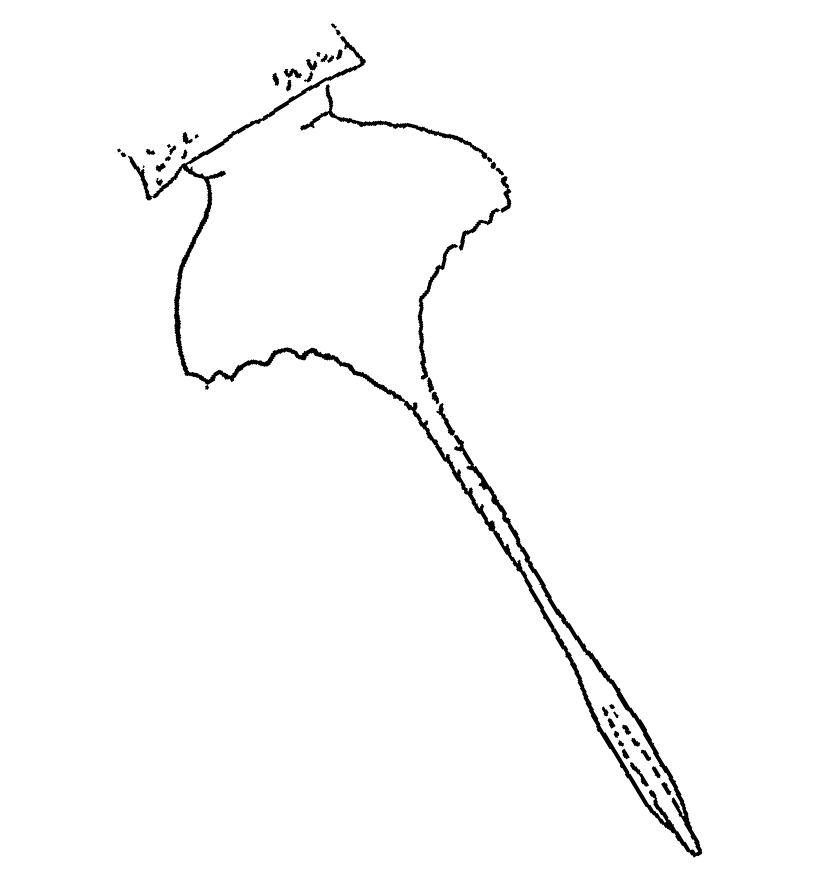|
Slimonidae
Slimonidae (the name deriving from the type genus '' Slimonia'', which is named in honor of Welsh fossil collector and surgeon Robert Slimon) is a family of eurypterids, an extinct group of aquatic arthropods. Slimonids were members of the superfamily Pterygotioidea and the family most closely related to the derived pterygotid eurypterids, which are famous for their cheliceral claws and great size. Many characteristics of the Slimonidae, such as their flattened and expanded telsons (the posteriormost division of their bodies), support a close relationship between the two groups. Slimonids are defined as pterygotioid eurypterids with swimming legs similar to those of the type genus, ''Slimonia'', and the second to fifth pair of appendages being non-spiniferous. The family contains only two genera, the almost completely known ''Slimonia'' and '' Salteropterus'', which is known only from the telson and the metastoma (a large plate part of the abdomen). Both slimonid genera preserv ... [...More Info...] [...Related Items...] OR: [Wikipedia] [Google] [Baidu] |
Pterygotioidea
Pterygotioidea (the name deriving from the type genus ''Pterygotus'', meaning "winged one") is a superfamily of eurypterids, an extinct group of aquatic arthropods. Pterygotioids were the most derived members of the infraorder Diploperculata and the sister group of the adelophthalmoid eurypterids. The group includes the basal and small hughmilleriids, the larger and specialized slimonids and the famous pterygotids which were equipped with robust and powerful cheliceral claws. Though the more primitive hughmilleriids were small, '' Hughmilleria wangi'' being the smallest of all pterygotioids at just in length, later members of the group, particularly in the Pterygotidae, would become the largest known arthropods to ever exist with several genera surpassing in length. Among all currently recognized eurypterid clades, the Pterygotioidea is the most diverse, containing over 50 species in 10 genera. With the number of recognized eurypterid species being around 250, pterygotio ... [...More Info...] [...Related Items...] OR: [Wikipedia] [Google] [Baidu] |
Hughmilleriidae
Hughmilleriidae (the name deriving from the type genus '' Hughmilleria'', which is named in honor of Scottish geologist Hugh Miller) is a family of eurypterids, an extinct group of aquatic arthropods. The hughmilleriids were the most basal members of the superfamily Pterygotioidea, in contrast with the more derived (more "advanced") families Pterygotidae and Slimonidae. Despite their classification as pterygotioids, the hughmilleriids possessed several characteristics shared with other eurypterid groups, such as the lanceolate telson (the most posterior segment of the body). Hughmilleriids are defined as pterygotioid eurypterids with swimming legs similar to those of the type genus, ''Hughmilleria'' (that is, 7th and 8th leg segments narrow and 9th segment very small), and whose second to fifth pair of appendages were spiniferous. Some further diagnostic characters unite the group, such as the slightly enlarged chelicerae (frontal appendages) and the streamlined shape of their b ... [...More Info...] [...Related Items...] OR: [Wikipedia] [Google] [Baidu] |
Slimonia Acuminata
''Slimonia'' is a genus of eurypterid, an extinct group of aquatic arthropods. Fossils of ''Slimonia'' have been discovered in deposits of Silurian age in South America and Europe. Classified as part of the family Slimonidae alongside the related '' Salteropterus'', the genus contains three valid species, ''S. acuminata'' from Lesmahagow, Scotland, ''S. boliviana'' from Cochabamba, Bolivia and ''S. dubia'' from the Pentland Hills of Scotland and one dubious species, ''S. stylops'', from Herefordshire, England. The generic name is derived from and honors Robert Slimon, a fossil collector and surgeon from Lesmahagow. Out of the four described species of ''Slimonia'', three measured below or up to in length. Only ''S. acuminata'' was larger, with the largest specimens measuring in length. Though this is large for a predatory arthropod, ''Slimonia'' would be exceeded in length by later and more derived (more "advanced") members of the closely related pterygotid family of eurypteri ... [...More Info...] [...Related Items...] OR: [Wikipedia] [Google] [Baidu] |
Salteropterus
''Salteropterus'' is a genus of eurypterid, an extinct group of aquatic arthropods. Fossils of ''Salteropterus'' have been discovered in deposits of Late Silurian age in Great Britain, Britain. Classified as part of the family Slimonidae, the genus contains one known valid species, ''S. abbreviatus'', which is known from fossils discovered in Herefordshire, England, and a dubious species, ''S. longilabium'', with fossils discovered in Leintwardine Beds, Leintwardine, also in Herefordshire. The generic name honours John William Salter, who originally described ''S. abbreviatus'' as a species of ''Eurypterus'' in 1859. ''Salteropterus'' is assumed to have been quite similar to its close relative ''Slimonia'', but the fragmentary nature of the fossil remains of ''Salteropterus'' make direct comparisons difficult. ''Salteropterus'' does however preserve a highly distinctive telson (the posteriormost division of the body) unlike any other in the Eurypterida. Beginning with an expanded ... [...More Info...] [...Related Items...] OR: [Wikipedia] [Google] [Baidu] |



